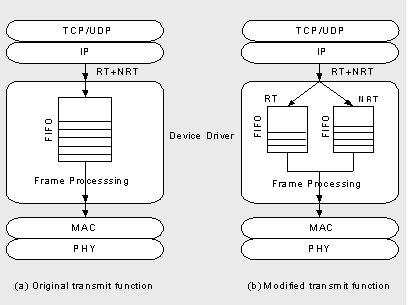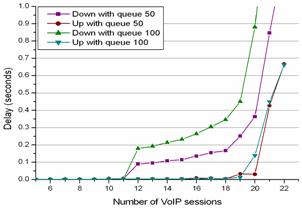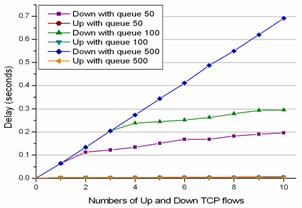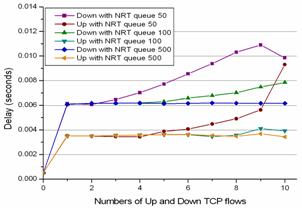|
Enhancement in VoWLAN through dual-queue strategy
|
[ Challenges ]
- IEEE 802.11 WLAN has gained substantial position in the residential market.
- WLAN lacks the capability to support real-time services, esp. VoIP.
- The new scheme should be deployable via simple SW upgrades, instead of HW changes.
|
[ Overview ]
- To overcome the above limitations, we proposed a simple dual-queue strategy by modifying the device driver of a 802.11 WLAN AP. Real-time(RT) and Non-real-time(NRT) packets were classified and enqueued into separate queues. Then, we implemented a strict priority queue policy to serve these two queues and deliver priority to the RT packets. We evaluated the impact of this method by various simulations and implementing a host AP.
|
[ Results ]
- The performance of VoIP can be improved through the Dual Queue scheme
- The reason for achieving improved performance is the behavior in the TCP flow control in WLAN. - The downlink was the bottleneck link.
- 10 VoIP sessions could be tolerated for 802.11b WLAN. (if G.711 codec is used)
- Performance of dual-queue scheme is compromised as the MAC HW queue size gets larger.
|
[ Publication ]
- J.G. Yu, Sunghyun Choi and Jaehwan Lee, "Enhancement of VoIP over IEEE 802.11 WLAN via Dual Queue Strategy", The 2004 IEEE International Conference on Communications (ICC'04), Paris, France, Jun 2004
|

Fig.1. Original architecture & dual-queue scheme
|

Fig.2. Capacity of IEEE 802.11b for VoIP (delay of Voice)
|

Fig.3. Delay of voice packets with single queue
|

Fig.4. Delay of voice packets with dual queue
|
|
|
|